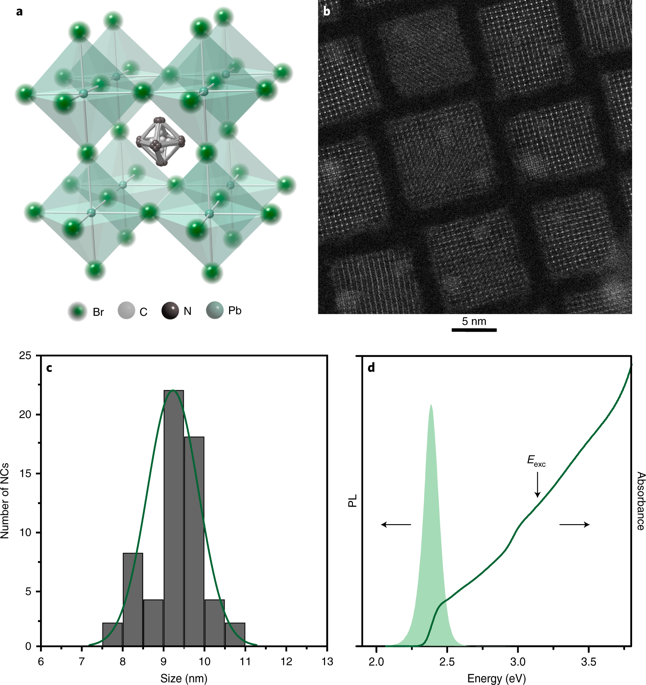Nature Materials ( IF 37.2 ) Pub Date : 2019-05-13 , DOI: 10.1038/s41563-019-0364-x Philippe Tamarat 1, 2 , Maryna I Bodnarchuk 3 , Jean-Baptiste Trebbia 1, 2 , Rolf Erni 3 , Maksym V Kovalenko 3, 4 , Jacky Even 5 , Brahim Lounis 1, 2

|
Lead halide perovskites have emerged as promising new semiconductor materials for high-efficiency photovoltaics, light-emitting applications and quantum optical technologies. Their luminescence properties are governed by the formation and radiative recombination of bound electron–hole pairs known as excitons, whose bright or dark character of the ground state remains unknown and debated. While symmetry analysis predicts a singlet non-emissive ground exciton topped with a bright exciton triplet, it has been predicted that the Rashba effect may reverse the bright and dark level ordering. Here, we provide the direct spectroscopic signature of the dark exciton emission in the low-temperature photoluminescence of single formamidinium lead bromide perovskite nanocrystals under magnetic fields. The dark singlet is located several millielectronvolts below the bright triplet, in fair agreement with an estimation of the long-range electron–hole exchange interaction. Nevertheless, these perovskites display an intense luminescence because of an extremely reduced bright-to-dark phonon-assisted relaxation.
中文翻译:

甲脒溴化铅钙钛矿纳米晶的基激子态为单线暗态
卤化铅钙钛矿已成为用于高效光伏、发光应用和量子光学技术的有前途的新型半导体材料。它们的发光特性受束缚电子-空穴对(称为激子)的形成和辐射复合的控制,其基态的亮或暗特征仍然未知且存在争议。虽然对称性分析预测单线态非发射地面激子顶部有一个明亮的激子三重态,但据预测,Rashba 效应可能会颠倒亮暗能级排序。在这里,我们提供了单甲脒溴化铅钙钛矿纳米晶体在磁场下的低温光致发光中暗激子发射的直接光谱特征。暗单线态位于亮三线态下方几毫电子伏特处,与对长程电子-空穴交换相互作用的估计完全一致。然而,这些钙钛矿显示出强烈的发光,因为从亮到暗的声子辅助弛豫极度减少。

































 京公网安备 11010802027423号
京公网安备 11010802027423号